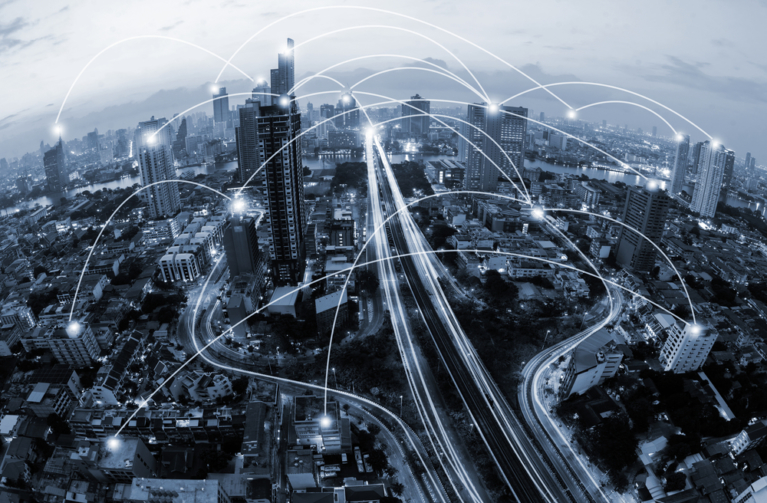What will be the dominant form of connectivity for future cities?

As we’ve discussed, the smart cities of the future will be a force for tremendous public good. But how will these smart cities be connected?
Advanced networks
When imagining future cities, we should look beyond current technology, as they only offer a fraction of the functionality afforded by more advanced networks. One of the biggest leaps forward will come with the implementation of a 5G network. 5G isn’t building on 4G, it is a totally different spectrum, both augmenting and extending the network. It offers a plethora of capability far beyond the scope of today’s 4G, enabling machine-to-machine connectivity, essentially making the IoT network a reality. In the coming years, it will be available on phones, tablets, smart-hubs, and many more devices.
Scientists estimate that the number of 5G connections will reach between 20 million and 100 million by 2021. LoRaWAN is another exciting technology on the horizon of the not-too-distant future, a long-range wireless networking technology which greatly improves the availability of internet access, even in remote areas.
Connection types
Both of these technologies aren’t far away. Manufacturers are developing their 5G products and operators in Korea, Japan, and the USA are vying to debut this new network – your next phone could be 5G ready.
A key benefit of 5G is not just the increased bandwidth – meaning higher speeds and quicker downloads – but also greater network connectivity. This allows many more devices to connect simultaneously, so you could see internet connectivity in everything from your car to your clothes.
But LoRaWAN could introduce yet more innovation on a city-wide level. It allows low-powered devices to connect to long-range wireless networks and overcomes problems such as data congestion within busy urban areas. LoRaWAN essentially extends the connectivity of 5G networks. Think of it as a giant Wi-Fi hotspot which could reach as far as 10 kilometres. This means that even the most mundane pieces of city infrastructure will be able to connect to the internet. Currently, the technology is being trialled in 250+ cities across the world. Thanks to the massive range, everything from air quality sensors to public access heart defibrillators can relay information in real time, without the need for a mobile network.
Fulfilling needs
The real benefit of super-connected smart cities, however, comes from those small interactions that you might not even think about. Smart hubs like Pulse will be able to provide you with free Wi-Fi calling and real time, up-to-date maps. The sheer availability of 5G and LoRaWAN networks means you’ll never need to be offline while you’re in a super-connected city.
To find out more about the difference Pulse Smart Hubs could make to your city, contact us today.